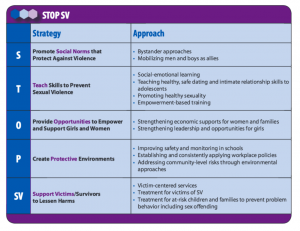
Table of Contents
What is Sexual Assault?
- Sexual assault is any form of sexual act or contact with another individual without the person’s approval or consent.
- Sexual assault can occur through physical force or threats of harm or condition when the attacker dosage the target person with heavy drugs or alcohol as part of the physical attack.
- Sexual assault includes rape and sexual coercion.
- Sexual assault may be done by someone outsider, close friends/relatives or even an intimate partner.
There are various forms of sexual assault prevailing in our society and some of them are shortlisted below:
- Rape: Sexual interaction against a person’s will
- Forcible sodomy: Anal or oral sex against a person’s will
- Forcible object penetration: Penetrating someone’s vagina or anus, or causing that person to penetrate her or himself, against that person’s will
- Marital rape
- Unwanted sexual touching
- Sexual contact with minors, whether consensual or not
- Incest (Sexual intercourse or sexual intrusion between family members.)
- Any unwanted or coerced sexual contact

Other sexual crimes include:
- Sexual harassment
- Solicitation of minors through the Internet
- Control of child pornography
Facts About SEXUAL ASSAULT:
- At some point in their lives, it is projected that 35 percent of women globally faced a sexual assault by non-partner (not including sexual; harassment)
- In every 73 seconds, an American is sexually assaulted.
- People of the age of 12-34 years are at highest risk for rape and sexual assault.
- 42% of college women who are raped never tell anyone about the assault.
- Rape leads to 32,000 pregnancies every year.
- In 2017 globally, it is estimated that 87,000 women i.e., more than half (50,000-58 percent) were intentionally killed by intimate partners or family members which also indicates that 137 women across the world are killed by a member of their own family every day.
- Current or former intimate partner killed more than a third (30,000) of the women intentionally in 2017
- Adult women account for 51 percent of all human trafficking victims detected globally.
- Women and girls together account for 71 percent, with girls representing approximately three out of every four child trafficking targets.
- Approximately three out of every four trafficked women and girls are trafficked for the resolution of sexual corruption.
What is Harassment?
- Harassment is an unwanted behavior which makes the person feel intimated or humiliated.
- Harassment is unwelcome conduct that is based on any of the race, color, religion, sex (including sexual orientation, gender identity, or pregnancy), national origin, older age, disability, or genetic information (including family medical history) etc.
- Unwelcome conduct or unwanted behavior could include:
- Written or spoken abuse.
- Offensive emails.
- Physical gestures and facial expressions.
- Tweets or comments on social media and websites.
- Banter, that is offensive.
- Harassment takes place where a person engages in unwanted that violates:
- Someone’s dignity or
- Creates an intimidating, hostile, degrading or offensive environment.
- Harassment is a serious issue that leads a person to live in fear, embarrassment, low self-esteem, depression, suicidal thoughts, humiliation, retaliation, and ridicule.
- Harassment can happen anywhere i.e., workplace, public vehicles, walking, colleges, school, shopping center, etc.
- Harassment can be done anyone; either someone outsider, close friends/relatives or even an intimate partner.
Facts About Harassment
- In a multi-country study from the Middle East and North Africa, among 40 and 60 per cent of women assumed they had faced street-based sexual harassment (mainly sexual comments, stalking/following, or staring/ogling)
- 31 percent to 64 percent of men said they had ever carried out such acts. Younger men, men with more education, and men who experienced violence as children were more likely to engage in street sexual harassment.
- Results from a national Australian survey show that almost two out of five women (39 percent) aged 15 and older who have been in the workforce in the last five years have experienced sexual harassment in the workplace during that period, compared to one out of four (26 percent) of their male counterparts.
Reasons for Increase in Sexual Assault and Harassment:
- Child marriage
- Forced marriage
- Female genital mutilation
- Labor mistreatment
- Traditional male-controlled practices
- Limiting divorce laws
- Lack of victim support.
- Gender inequality
- Lack of education/ sex education
- Poverty
- Dowry system
- Trafficking
- Lack of strict regulation against the rapist or harasser or tormentor
- Lack of family support.
- Women’s hesitation to report on assaults or harassments
- Lack of women supports services or campaigns to motivate and protect women.
- Unwanted pregnancy
- Chronic physical and psychological conditions
Consequences of Sexual Assault and Harassment:
- Depression, anxiety, shock, phobias and other mental health issues
- Unwanted pregnancy
- Sexually transmitted diseases and infections.
- Post-traumatic stress disorder (PTSD)
- Guilt, shame, self-blame
- Self-Isolation
- Loss of productivity
- Increase medical expenses
- Fear, distrust, embarrassment
- Reproductive health problems
- Suicide attempts
- Other physical and mental health issues
- Higher risk for engaging in behaviors such as smoking, binge drinking, and sexual risk behaviors
- Poor self-esteem
- Physical inactivity
- Alcohol and drug abuse
- Self-harm
- Develop sexually transmitted diseases and infections
- Fear, distrust, embarrassment
Consequences of Sexual Assault and Harassment During Pregnancy:
- Miscarriage
- Late entry into prenatal care
- Stillbirth
- Premature labor and birth
- Fetal injury
- Low-birth-weight or small-for-gestational-age infants.
Preventive Measures for Sexual Assault and Harassment:
- Provision of community-based program on gender equity.
- Raising the status of women in society through education, employment opportunities.
- Family support in open discussions about harassment and violence their children might face in college, school and working environment.
- Public enlightenment or clarification on certain myths and the traditional belief that inflames sexual violence in the society or nation.
- Self-defense practices provision to the girls in order to protect himself or herself during violence or attack.
- Strict rules and regulation against minor violence and counseling so there would be less chance of high assassination or violence, especially against the victim.
According to CDC, the strategies to prevent Sexual violence are:
![]()

References and For More Information:
https://www.who.int/violence_injury_prevention/violence/global_campaign/en/chap6.pdf http://www.unwomen.org/en/what-we-do/ending-violence-against-women/facts-and-figures https://www.doorwaysva.org/our-work/education-advocacy/the-facts-about-domestic-violence/ https://www.cdc.gov/violenceprevention/intimatepartnerviolence/index.html
https://www.cdc.gov/violenceprevention/intimatepartnerviolence/fastfact.html
https://www.atrainceu.com/content/3-types-intimate-partner-violence
https://apps.who.int/iris/bitstream/handle/10665/77432/WHO_RHR_12.36_eng.pdf;sequence=1
https://www.chattertons.com/site/private/employment-law-employees/harrasment-and-bullying/ https://www.womenshealth.gov/relationships-and-safety/sexual-assault-and-rape/sexual-assault https://www.marshall.edu/wcenter/sexual-assault/types-of-sexual-assault/ https://www.ncbi.nlm.nih.gov/pmc/articles/PMC4111066/ https://www.cdc.gov/violenceprevention/sexualviolence/prevention.html https://www.cdc.gov/violenceprevention/intimatepartnerviolence/fastfact.html
https://www.dosomething.org/us/facts/11-facts-about-sexual-assault#fn3
https://www.rainn.org/articles/sexual-assault
https://www.doorwaysva.org/our-work/education-advocacy/the-facts-about-sexual-assault/
“Sexual Violence.” Center for Disease Control. http://www.cdc.gov/ViolencePrevention/pdf/SV-DataSheet-a.pdf